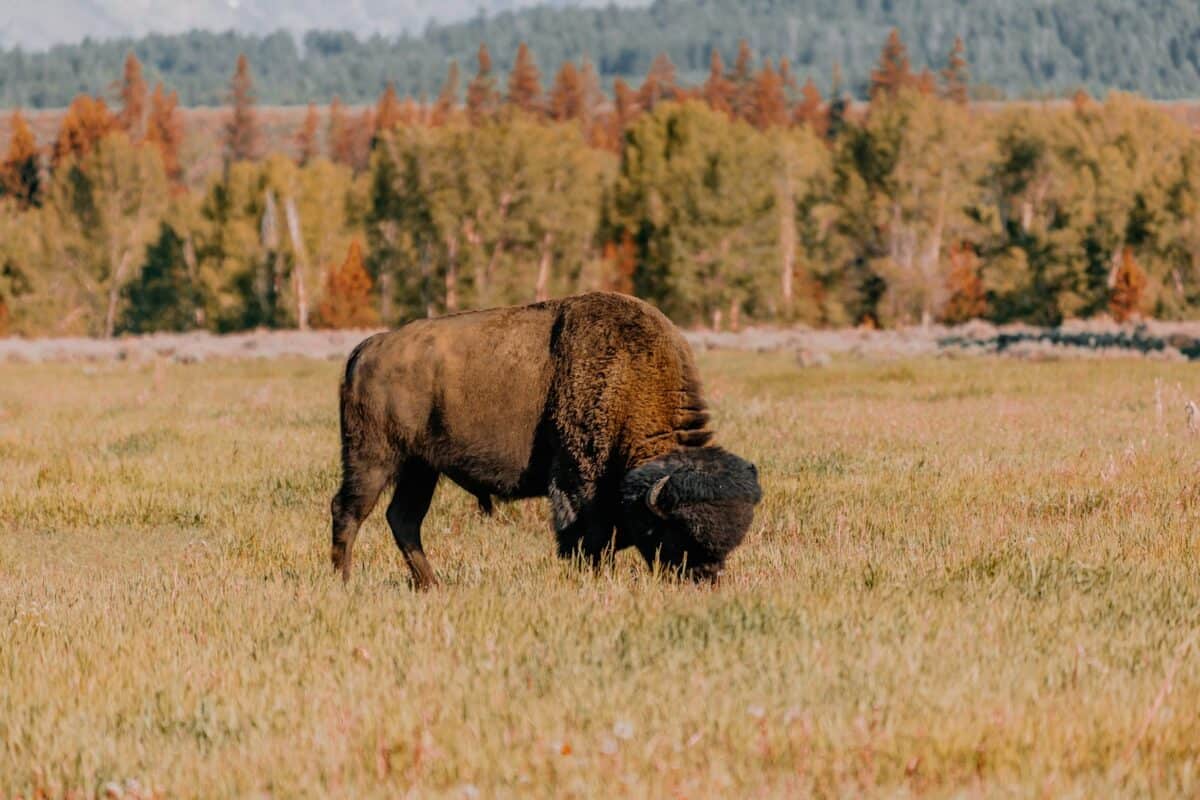Once numbering in the tens of millions across North America, American bison were hunted to near extinction by the late 1800s, with fewer than 1,000 individuals remaining. Today, thanks to conservation efforts, approximately 500,000 bison exist in the United States, though only about 30,000 are managed as wild, free-ranging animals in conservation herds. For wildlife enthusiasts and history buffs alike, witnessing these majestic creatures roam freely in their natural habitat offers a profound connection to America’s ecological past. Standing up to 6 feet tall at the shoulder and weighing up to 2,000 pounds, these magnificent mammals create an unforgettable sight against the backdrop of the American landscape. This guide explores the best places across the United States where you can experience wild bison herds in their natural environments, complete with viewing tips and conservation context.
Yellowstone National Park, Wyoming/Montana/Idaho
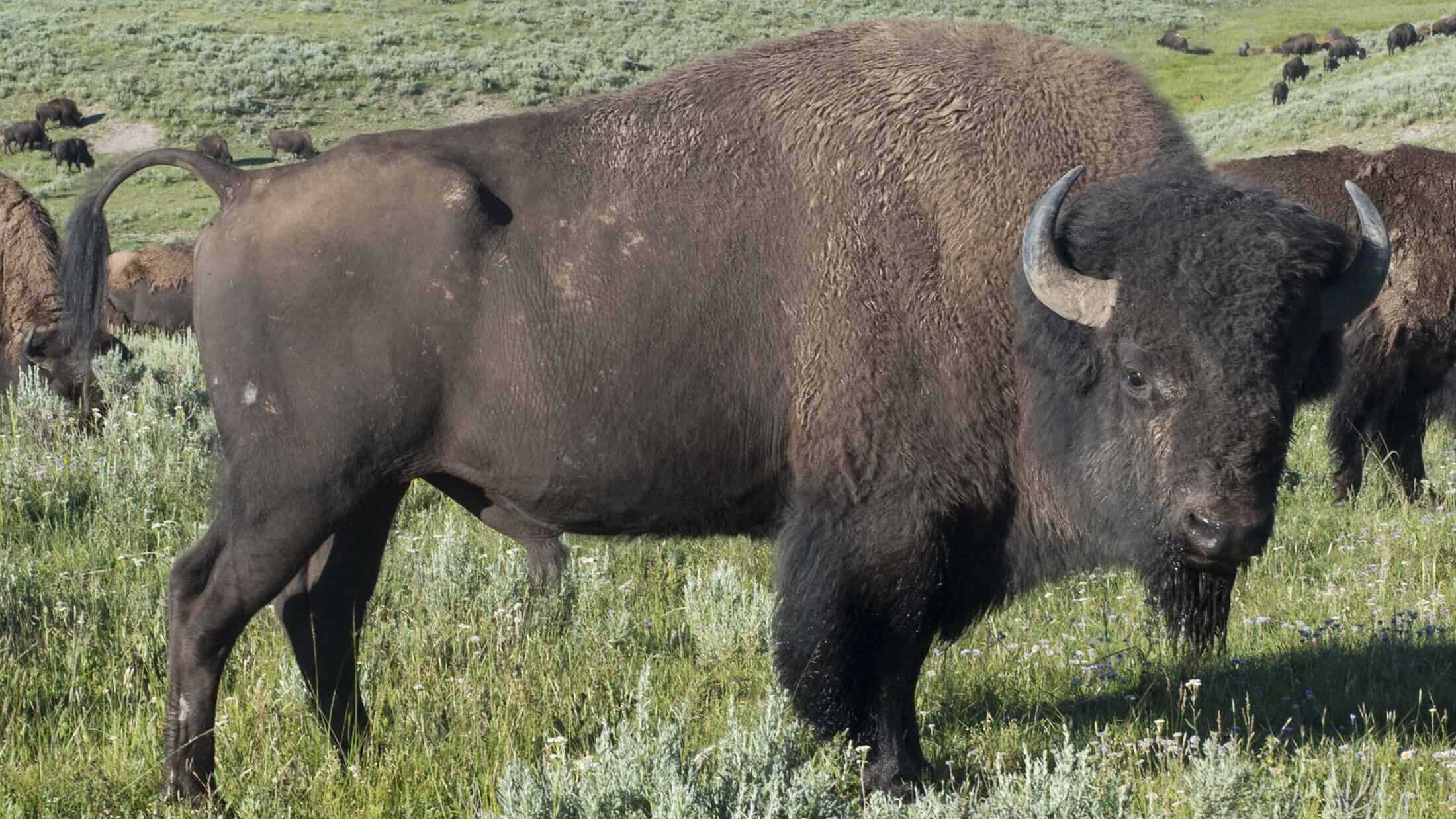
Yellowstone National Park hosts America’s oldest and largest public bison herd, with approximately 5,000 animals roaming freely across the park’s 2.2 million acres. These bison are particularly significant as they are direct descendants of the last wild bison in the United States, representing one of the few herds that has not been crossbred with cattle. The Lamar Valley, often called “America’s Serengeti,” offers some of the best viewing opportunities, especially during early morning or evening hours when the animals are most active.
Visitors can observe these magnificent creatures year-round, though winter provides a dramatic contrast as the dark animals stand out against the snowy landscape. During summer months, breeding season (July-August) brings spectacular displays as bulls compete for dominance. Park rangers recommend maintaining a distance of at least 25 yards from bison, as despite their seemingly docile nature, they can run up to 35 mph and are responsible for more visitor injuries in Yellowstone than any other animal. The Hayden Valley and areas around Old Faithful also frequently host large bison gatherings.
Theodore Roosevelt National Park, North Dakota
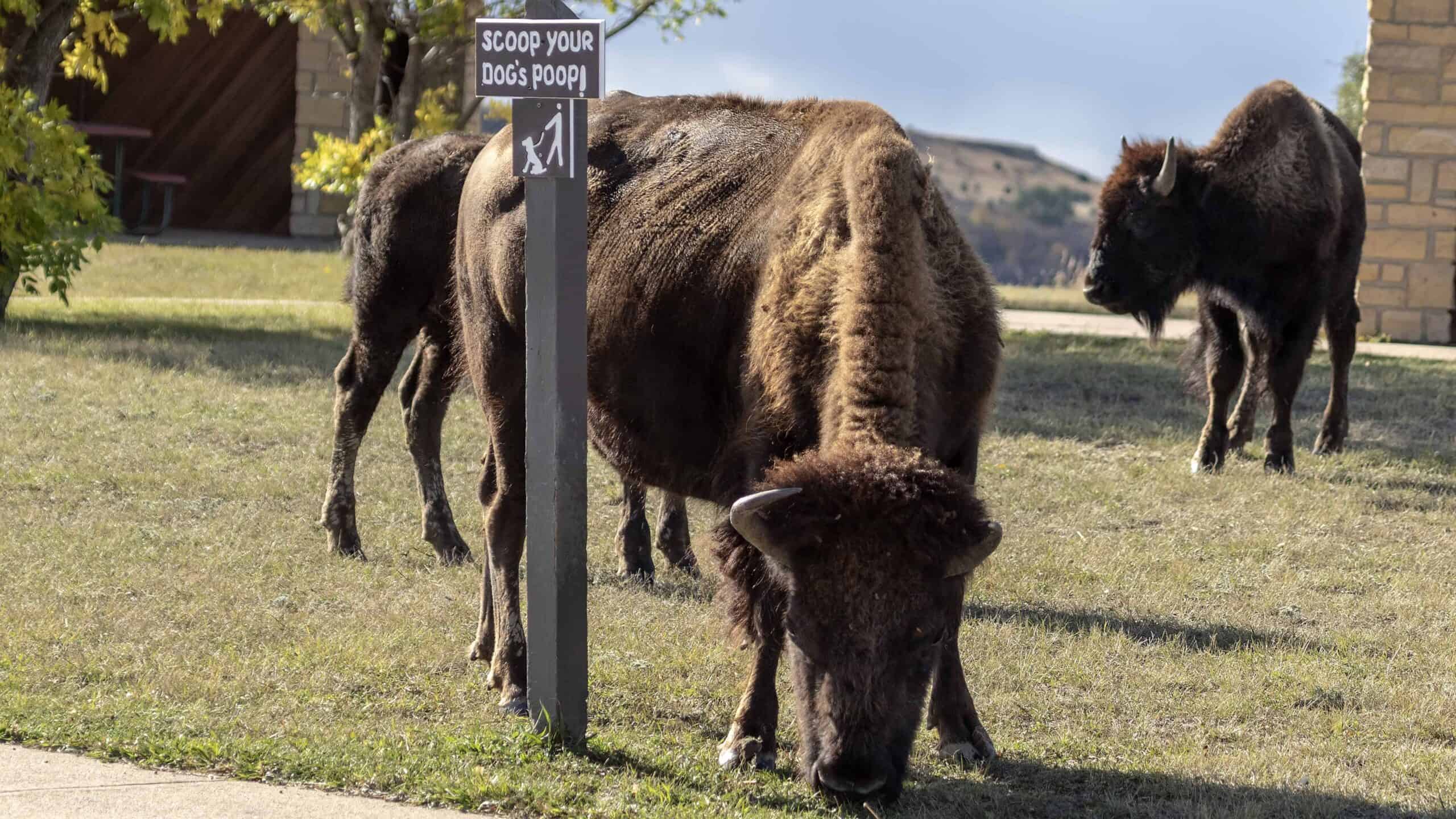
Named after the president who was instrumental in early bison conservation, Theodore Roosevelt National Park maintains a herd of approximately 400-600 bison across its North and South Units. The rolling badlands provide a spectacular backdrop for wildlife viewing, and the park’s relative lack of crowds compared to Yellowstone means more intimate viewing experiences. The scenic loop drives in both units offer excellent opportunities to spot bison, particularly in the early morning or around sunset when they’re most active.
The South Unit’s 36-mile scenic drive passes through several areas where bison frequently graze, while the more remote North Unit offers a wilder experience along its 14-mile scenic drive. Park officials actively manage the herd size through periodic roundups and relocations to maintain ecological balance. Fall brings the rutting season when bulls engage in impressive displays of strength, bellowing and dust-bathing as they compete for breeding rights. The park’s visitor centers provide updated information on recent bison sightings to maximize your chances of an encounter.
Badlands National Park, South Dakota
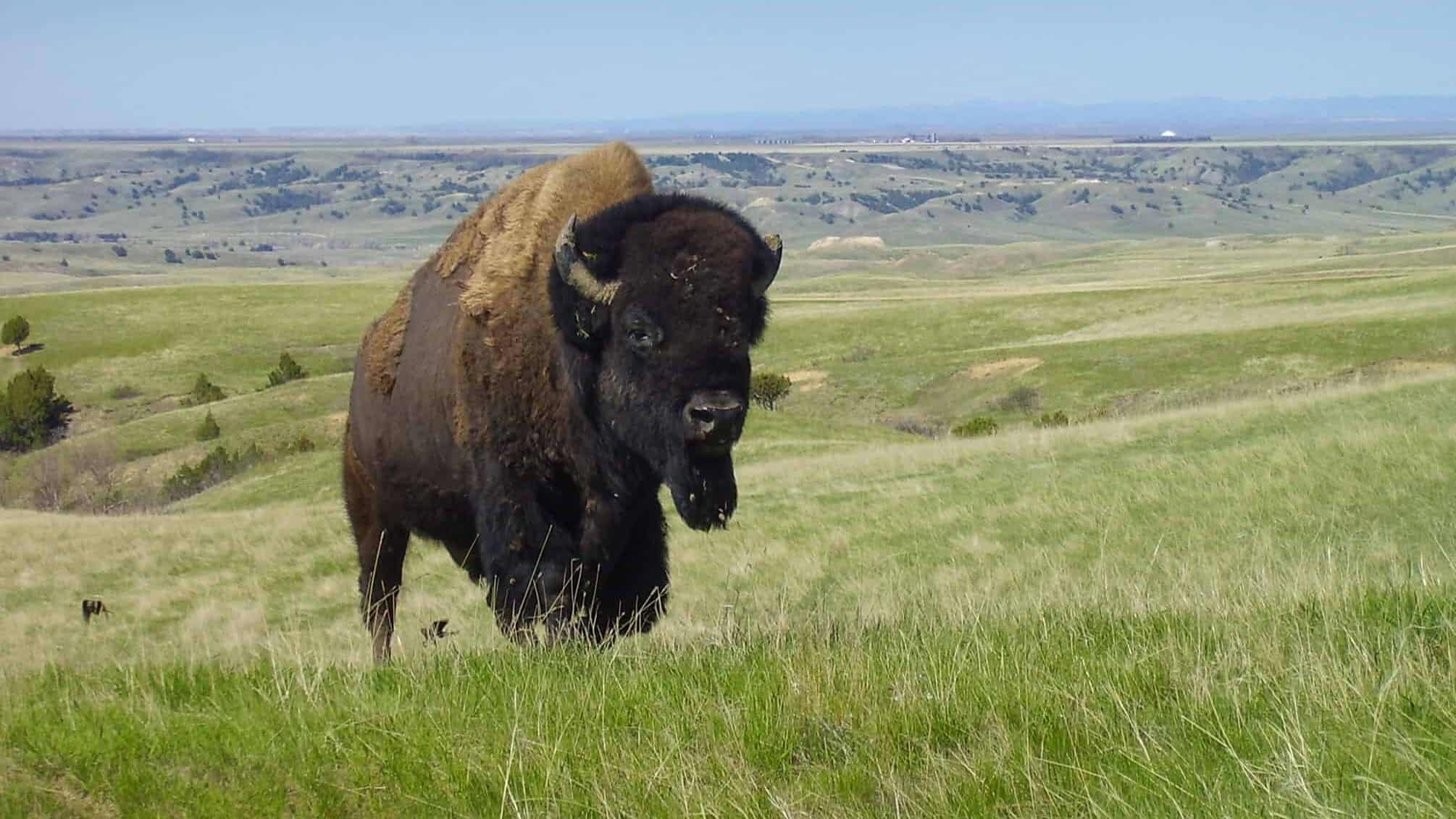
Against the otherworldly landscape of colorful buttes, pinnacles, and spires, approximately 1,200 bison roam free in Badlands National Park. The Sage Creek Wilderness Area in the park’s north unit offers the best viewing opportunities, with herds often visible from the Sage Creek Rim Road. Unlike some other parks, Badlands allows backcountry hiking without trails, creating opportunities for more adventurous travelers to experience bison in a truly wild setting (though always maintaining safe distances).
The mixed-grass prairie ecosystem here supports the bison along with prairie dogs, pronghorn antelope, and bighorn sheep, creating a complete prairie wildlife viewing experience. Dawn and dusk provide optimal viewing times when animals are most active and the dramatic landscape is bathed in golden light. The park’s herd has been established since 1963, originally with 50 animals brought from Theodore Roosevelt National Park and Fort Niobrara National Wildlife Refuge. Today’s population is managed for genetic diversity and ecological sustainability, with periodic roundups helping maintain the target population size.
Wind Cave National Park, South Dakota
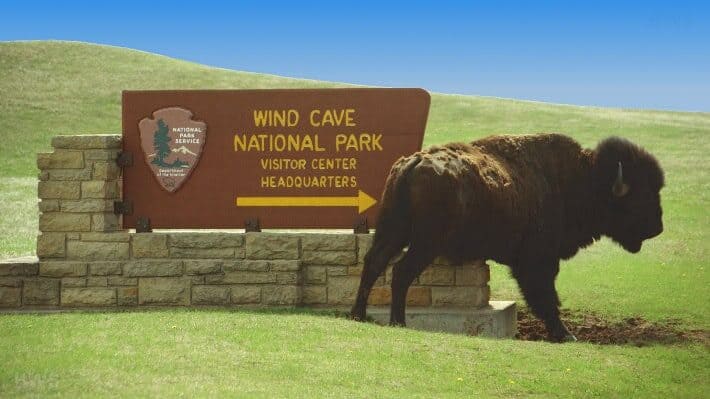
While known primarily for its remarkable cave system, Wind Cave National Park protects 33,851 acres of mixed-grass prairie and ponderosa pine forest above ground, supporting a genetically valuable bison herd of approximately 350-400 animals. This herd is particularly significant to conservation efforts as it contains some of the most genetically pure bison, largely free from cattle gene introgression. The rolling prairie landscape provides excellent visibility for wildlife viewing along the park’s main road (US Highway 385) and the Rankin Ridge area.
The park’s Wildlife Loop Road and Red Valley Road are particularly good routes for spotting bison. Unlike some more heavily visited parks, Wind Cave offers a more serene wildlife viewing experience with fewer crowds. The bison here interact with prairie dog towns, creating fascinating ecological interactions as the bison grazing patterns influence prairie dog colony expansion. This park also presents a unique opportunity to combine underground cave tours with above-ground wildlife watching, making it a complete Black Hills experience. Early morning is typically the best time for bison viewing, with herds often gathering near water sources.
Grand Teton National Park, Wyoming
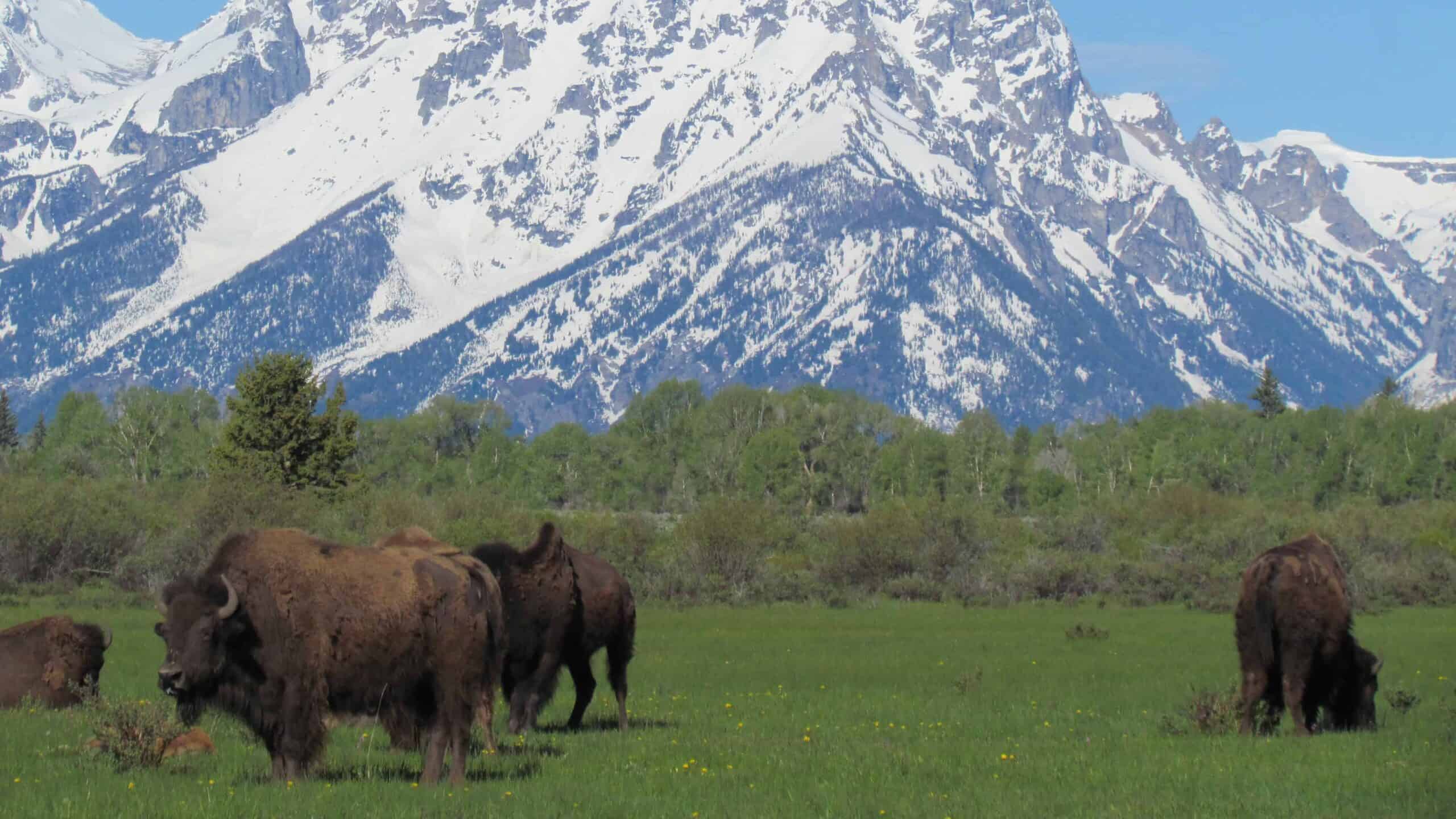
The dramatic backdrop of the Teton Range makes bison viewing in Grand Teton National Park particularly photogenic. The park’s herd of approximately 500 bison is managed jointly with the National Elk Refuge, with animals moving between these areas seasonally. During summer months, bison frequently graze in the open sage flats along Antelope Flats Road and in the Elk Ranch Flats area. The wide-open spaces provide excellent visibility, making these areas prime photography locations, especially during golden hour lighting.
The Kelly area and Gros Ventre Road also offer good viewing opportunities, particularly in late summer. Unlike the Yellowstone herd to the north, Grand Teton’s bison are part of the Jackson herd, which migrates between the park and the National Elk Refuge depending on the season. Winter finds many of the bison moving to the refuge, where supplemental feeding programs sustain them through the harsh Wyoming winters. The historical context here is compelling, as this area once represented the southern edge of the species’ range before their near-extinction in the late 19th century. The visitor centers provide updated information on recent bison movements to help plan your wildlife watching outings.
Custer State Park, South Dakota

One of the nation’s largest state parks, Custer State Park maintains a herd of approximately 1,400 bison across its 71,000 acres of Black Hills habitat. The park’s 18-mile Wildlife Loop Road offers almost guaranteed bison sightings, making it one of the most reliable places in America to view these animals. The annual Buffalo Roundup in late September has become a major tourism event, drawing thousands of spectators to watch cowboys, cowgirls, and park staff round up and drive the bison for health checks, branding, and herd culling.
Unlike most national parks, Custer State Park manages its bison as a sustainable resource, with excess animals sold at auction to maintain the ecological carrying capacity of the land. This approach reflects a different management philosophy than found in federal preserves. The park’s rolling prairie grasslands support not only bison but also pronghorn, elk, deer, coyotes, and the famous “begging burros” – feral donkeys that approach vehicles seeking handouts (though feeding wildlife is strongly discouraged). The visitor center features excellent interpretive displays about the park’s wildlife management programs and bison biology, providing context for your wildlife viewing experiences.
Tallgrass Prairie National Preserve, Kansas
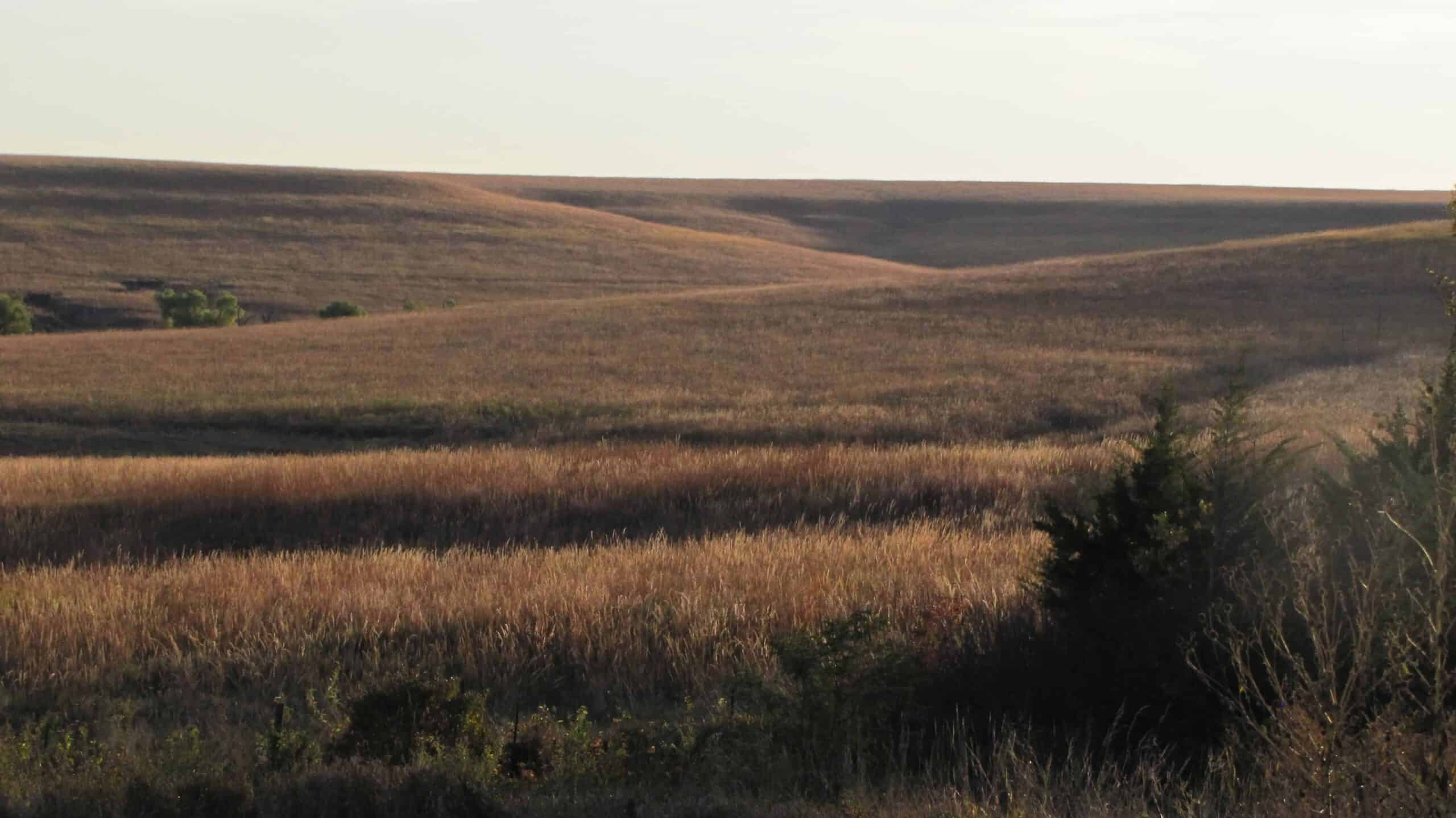
Representing one of the newest bison reintroduction efforts, the Tallgrass Prairie National Preserve began rebuilding its herd in 2009 and now maintains approximately 100 animals on nearly 11,000 acres. This site is particularly significant as it represents the restoration of bison to the tallgrass prairie ecosystem – the most endangered ecosystem in North America, with less than 4% of original tallgrass prairie remaining. The Preserve’s rolling hills and open vistas allow visitors to experience what much of the central Great Plains looked like before European settlement.
The preserve offers several hiking trails and a bus tour that provide opportunities to view the bison in their natural tallgrass habitat, with the Southwind Nature Trail and the Scenic Overlook Trail offering particularly good vantage points. Unlike some other viewing locations, the tallgrass prairie setting means bison can sometimes be partially obscured by the tall grasses, especially in late summer when grasses can reach heights of 6-8 feet. This creates a more authentic ecosystem interaction but requires more patience from wildlife watchers. The preserve’s relatively recent reintroduction program offers visitors insight into the challenges and successes of modern conservation efforts to restore historic species to their native ranges.
Antelope Island State Park, Utah
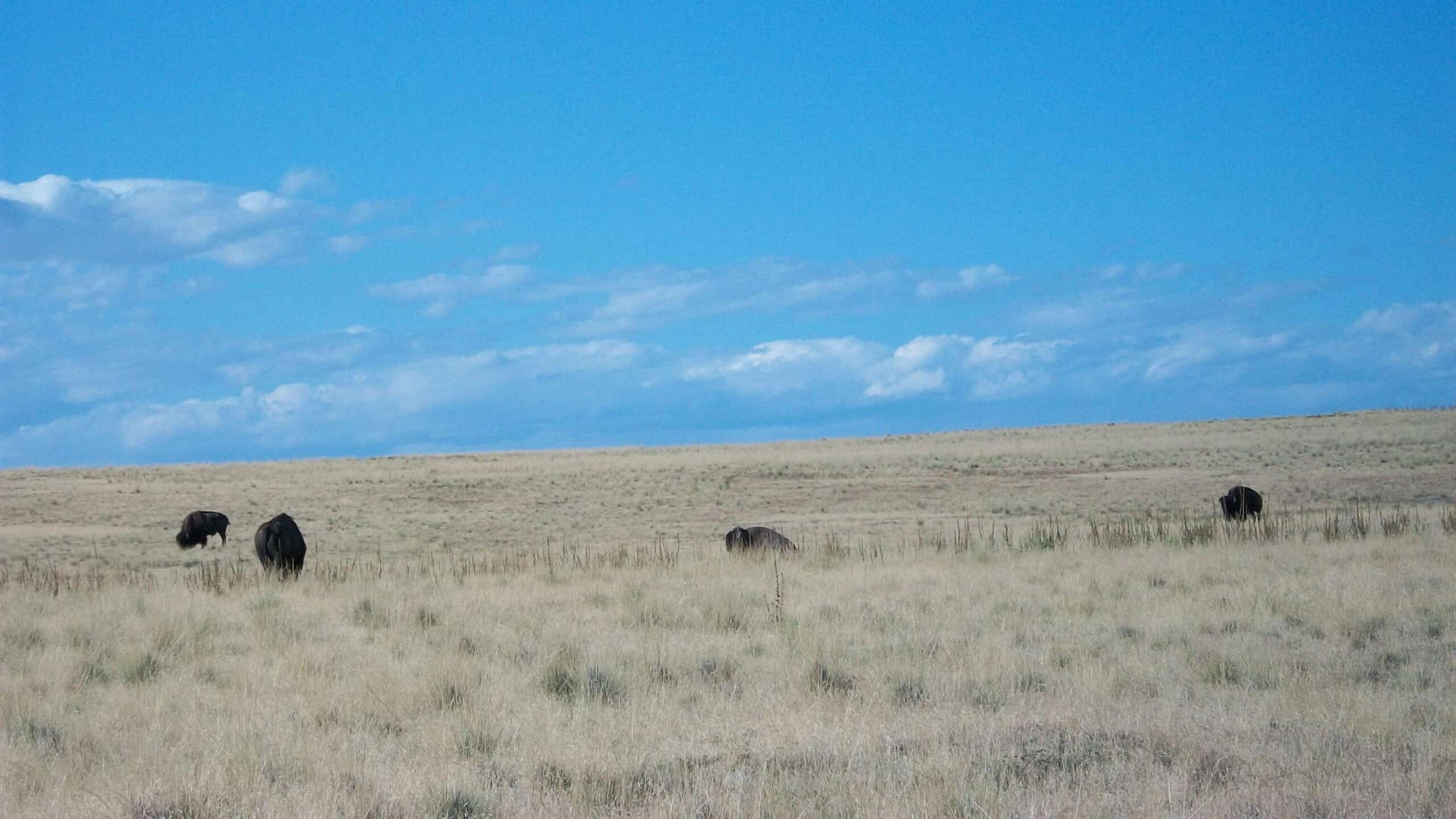
Rising from the southeastern shore of the Great Salt Lake, Antelope Island hosts one of the oldest publicly owned bison herds in America, established in 1893 with 12 animals. Today, approximately 500-700 bison roam the island’s 28,000 acres. The contrast between the rustic bison and the island’s stark, beautiful landscape with the shimmering salt lake and distant mountains creates unique photo opportunities found nowhere else. The annual bison roundup in late October offers a spectacular event where horseback riders drive the herd into corrals for health assessments.
Unlike many other bison viewing locations, Antelope Island’s relatively barren landscape and limited vegetation make bison spotting particularly easy throughout the year. The island is accessed via a 7-mile causeway from Syracuse, Utah, creating a sense of remoteness despite being only 41 miles from Salt Lake City. Besides bison, visitors can spot pronghorn (for which the island is named), bighorn sheep, mule deer, and numerous bird species. The Fielding Garr Ranch historic site on the island provides context for the agricultural history of the region and how ranching influenced wildlife management practices. The island’s White Rock Bay and Lakeside trails offer excellent opportunities for viewing bison while hiking.
Henry Mountains, Utah
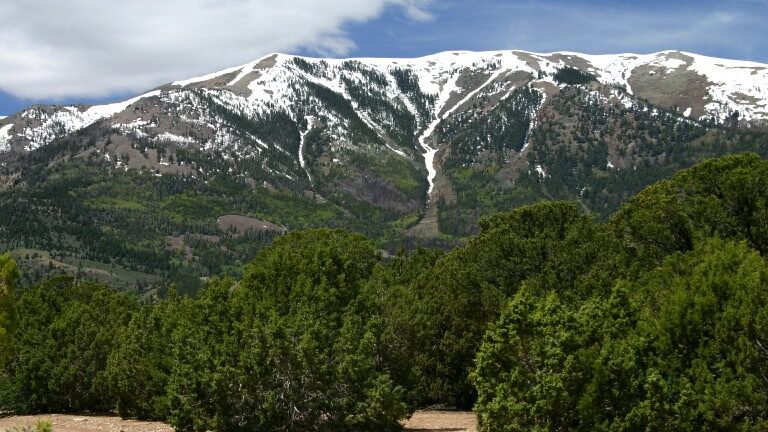
For adventurous travelers seeking a truly wild bison experience, the Henry Mountains in southern Utah harbor the only free-roaming, genetically pure, huntable bison herd on public lands in the United States. Approximately 300-500 bison range across this remote mountain landscape managed by the Bureau of Land Management. Unlike park settings, encountering bison here requires more effort and often four-wheel-drive vehicles to navigate the rugged terrain, but rewards visitors with a glimpse of truly wild bison behavior without fences or management constraints.
The herd originated from Yellowstone bison transplanted to the area in the 1940s. Today, they roam across approximately 300,000 acres of public land, migrating seasonally between mountain meadows and lower desert regions. Limited hunting permits are issued annually as a management tool to maintain population targets. The McMillan Springs campground area and the Bull Creek Pass road offer better chances for bison sightings, though viewing requires patience and often binoculars or spotting scopes. The remote nature of this area means visitors should be self-sufficient with adequate supplies, navigation tools, and emergency preparation when venturing into this backcountry in search of bison.
Fort Niobrara National Wildlife Refuge, Nebraska

Established in 1912 partly as a bison preserve, Fort Niobrara National Wildlife Refuge maintains a herd of approximately 350 bison on its 19,000 acres in north-central Nebraska. The refuge’s auto tour route offers excellent viewing opportunities along the scenic Niobrara River valley. This herd is particularly significant as one of the original foundation herds established for bison conservation, and it has been maintained as genetically pure with minimal cattle gene introgression.
The Fort Falls Trail and the Fort Niobrara Wilderness Area provide opportunities to view bison in diverse habitats ranging from river bottomlands to upland prairie. The visitor center features exhibits on the history of bison conservation and the ecological role these animals play in maintaining prairie ecosystems. Unlike some larger parks, Fort Niobrara’s compact size means bison viewing can be accomplished in a half-day visit, making it accessible for travelers with limited time. The refuge also protects a herd of elk and provides habitat for over 230 bird species, creating a well-rounded wildlife viewing experience in the Sandhills region of Nebraska.
Neal Smith National Wildlife Refuge, Iowa
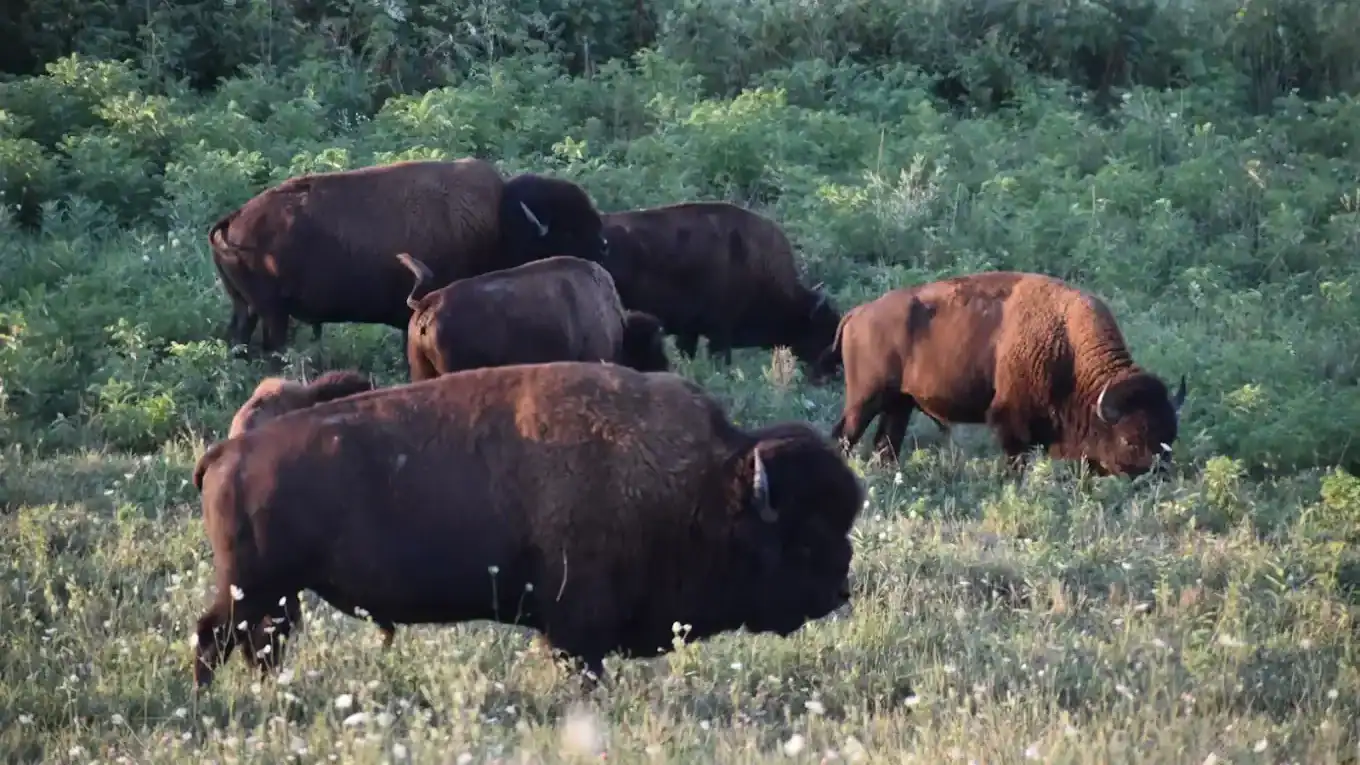
Representing one of the most ambitious tallgrass prairie restoration projects in the Midwest, the Neal Smith National Wildlife Refuge has reintroduced bison to approximately 800 acres of their 5,600-acre prairie reconstruction. Established in 1990, this relatively young refuge maintains a herd of about 50-70 bison as part of its mission to recreate the native ecosystem that once covered much of Iowa. The Prairie Learning and Visitor Center provides excellent educational displays about bison biology and prairie ecology before visitors embark on the 2.5-mile auto tour route that winds through the bison enclosure.
What makes this location unique is witnessing the process of ecological restoration in action, as the refuge continues converting former agricultural land back to native prairie, demonstrating how bison interact with this recovering landscape. Located just 20 miles from Des Moines, Neal Smith offers one of the most accessible bison viewing experiences in the Midwest. The enclosed observation deck at the visitor center provides a safe vantage point for photography, and the refuge’s environmental education programs frequently highlight the ecological role of bison as a keystone species. The combination of prairie restoration with bison reintroduction makes this site particularly valuable for understanding conservation in the context of heavily altered landscapes.
Viewing Tips and Conservation Etiquette
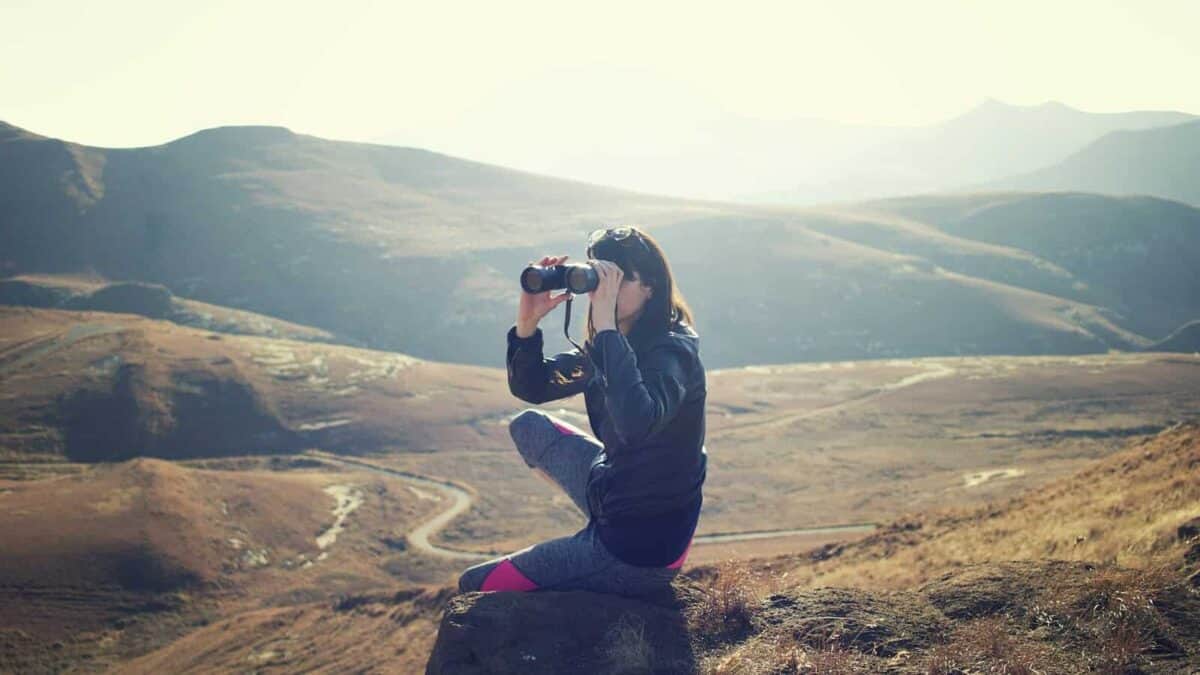
When viewing wild bison, safety must be the primary concern. These massive animals can sprint at speeds up to 35 mph and are unpredictable, especially during rutting season (July-August) or when calves are present (April-June). National parks and refuges recommend staying at least 25 yards (75 feet) away from bison at all times. Binoculars and telephoto lenses allow for close observation without disturbing the animals. Early morning and evening hours typically offer the best viewing opportunities when bison are most active and the lighting is ideal for photography.
Responsible wildlife viewing includes practicing ethical photography (never baiting or approaching animals for better shots), staying on designated roads and trails, properly disposing of all waste, and respecting closures of sensitive habitat areas. Many parks provide pullouts specifically designed for wildlife viewing to minimize traffic hazards. Remember that your actions affect not just your safety but the well-being and natural behavior of the bison themselves. Supporting conservation organizations like the American Bison Society or National Bison Association helps ensure these magnificent animals continue to thrive for future generations to enjoy. By treating these encounters with respect, we contribute to the ongoing conservation success story of the American bison.
Witnessing wild bison roam across America’s landscapes offers more than spectacular wildlife viewing—it provides a living connection to our continent’s ecological and cultural history. These magnificent animals, once brought to the brink of extinction, now represent one of conservation’s greatest success stories, though their recovery remains incomplete. While today’s approximately 30,000 conservation herd bison represent only a fraction of the estimated 30-60 million that once thundered across North America, each surviving herd offers a window into what once was and what might be again.
As you plan your bison-viewing adventures, consider visiting several locations to appreciate the diverse ecosystems these adaptable animals inhabit—from the geothermal wonders of Yellowstone to the sweeping tallgrass prairies of the Midwest. Each setting provides a different perspective on how bison shaped, and continue to shape, the American landscape. Supporting these conservation areas through responsible tourism helps ensure that future generations will also experience the awe of watching America’s largest land mammal move freely across its native range.
The story of the American bison—from near-extinction to recovery—reminds us that with dedication and foresight, we can reverse even the most dire conservation challenges. As visitors witness these animals in their natural settings, they become part of this ongoing narrative of restoration and hope. In the thundering hooves and dust clouds of a bison herd, we glimpse not just
- The Best Places in the U.S. to See Wild Bison Roam Free - August 11, 2025
- 13 Most Loyal Dog Breeds in the World - August 10, 2025
- Why Some Mammals Hibernate Without Ever Freezing - August 10, 2025

